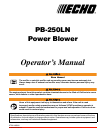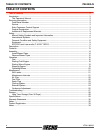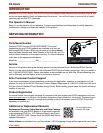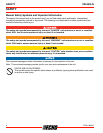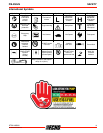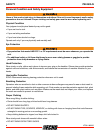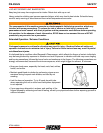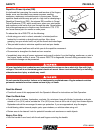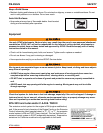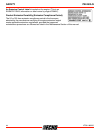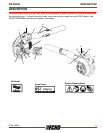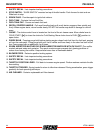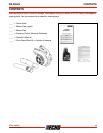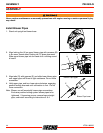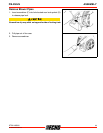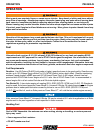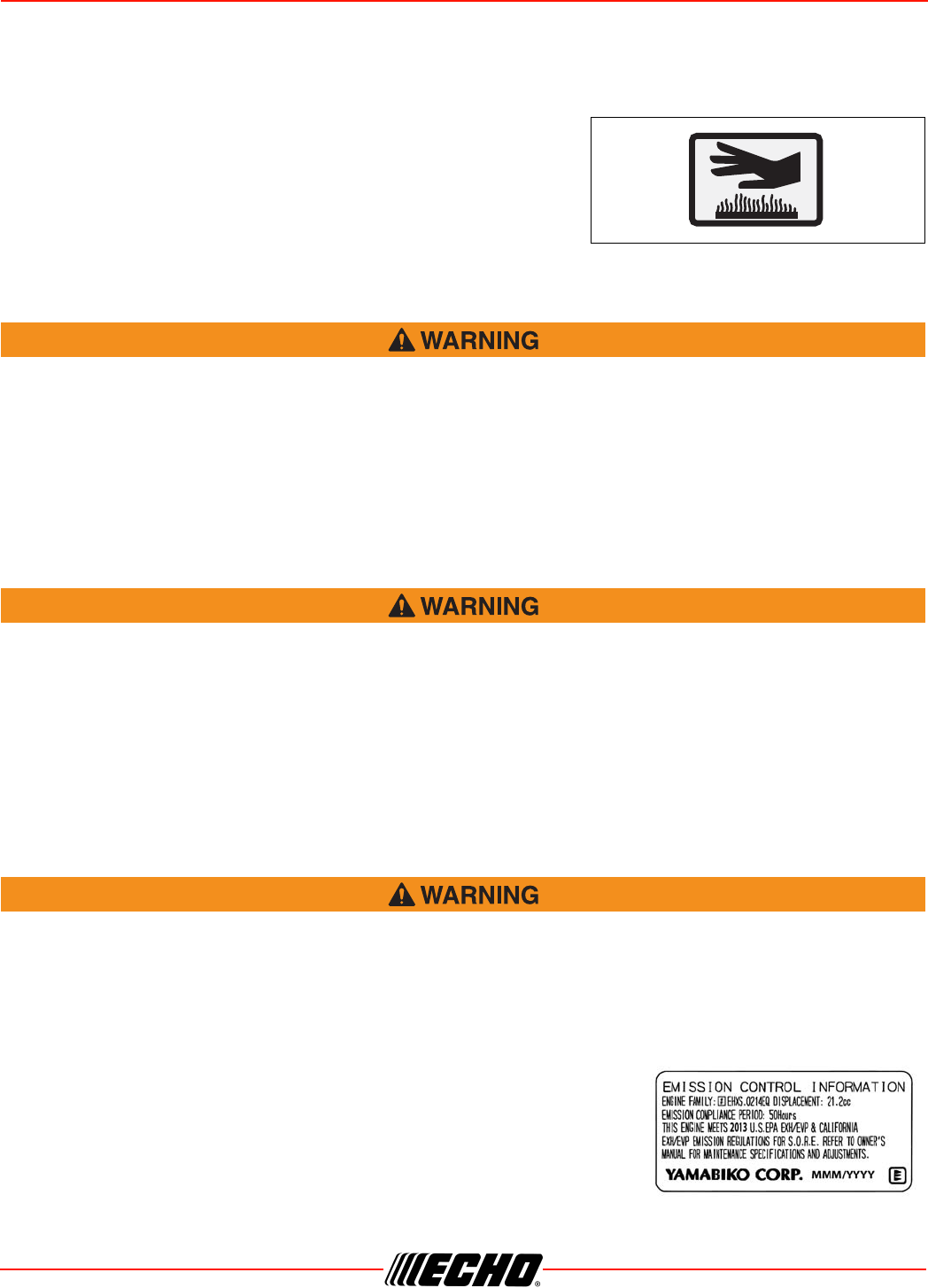
PB-250LN SAFETY
X7501186000 9
© 10/2014 ECHO Inc.
Keep a Solid Stance
• Maintain footing and balance at all times. Do not stand on slippery, uneven or unstable surfaces. Do not
work in odd positions or on ladders. Do not over reach.
Avoid Hot Surfaces
• Keep exhaust area clear of flammable debris. Avoid contact
during and immediately after operation.
Equipment
Use only ECHO attachments. Serious injury may result from the use of a non-approved attachment
combination. ECHO, INC. will not be responsible for the failure of cutting devices, attachments or
accessories which have not been tested and approved by ECHO. Read and comply with all safety
instructions listed in this manual.
• Check unit for loose/missing nuts, bolts, and screws. Tighten and/or replace as needed.
• Do not use blower if any part is missing or damaged.
• Have repairs done only by an authorized ECHO Service dealer.
Moving parts can amputate fingers or cause severe injuries. Keep hands, clothing and loose objects
away from all openings.
• ALWAYS stop engine, disconnect spark plug, and make sure all moving parts have come to a
complete stop before removing obstructions, clearing debris, or servicing unit.
• DO NOT start or operate unit unless all guards and protective covers are properly assembled to
unit.
• NEVER reach into any opening while the engine is running. Moving parts may not be visible
through openings.
Check fuel system for leaks due to fuel tank damage, especially if the unit is dropped. If damage or
leaks are found, do not use unit, otherwise serious personal injury or property damage may occur.
Have unit repaired by an authorized servicing dealer before using.
EPA 2010 and Later and/or C.A.R.B. TIER III
The emission control system for the engine is EM (engine modification)
and, if the second to last character of the Engine Family on the Emission
Control Information label (sample below) is “C”, “K”, or “T”, the emission
control system is EM and TWC (3-way catalyst). The fuel tank/fuel line
emission control system is EVAP (evaporative emissions). Evaporative
emissions for California models are only applicable to fuel tanks.



